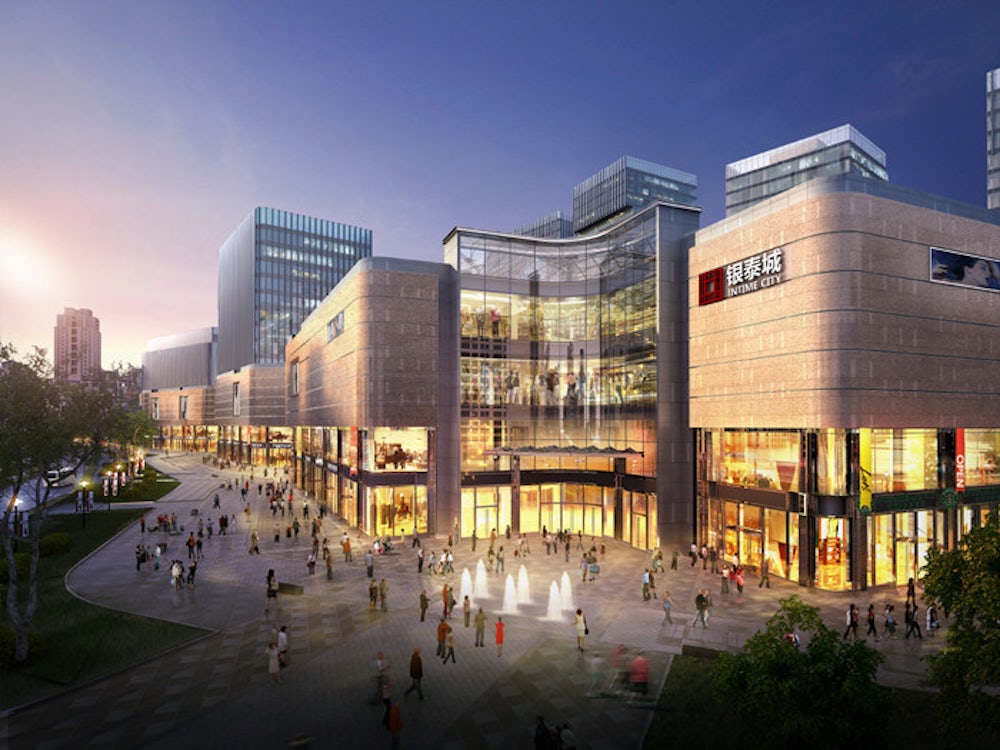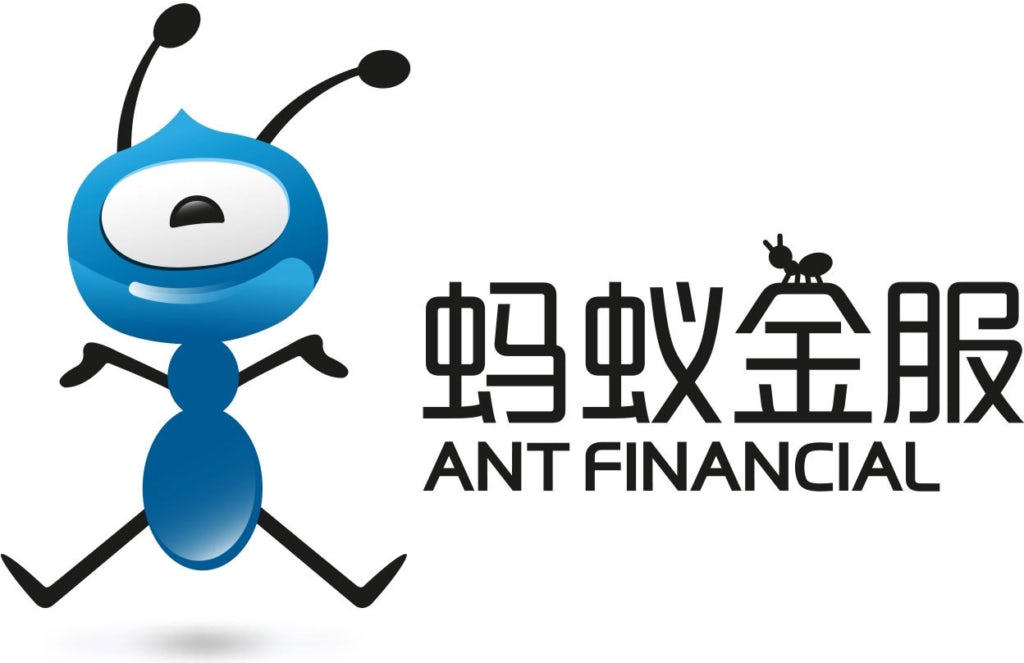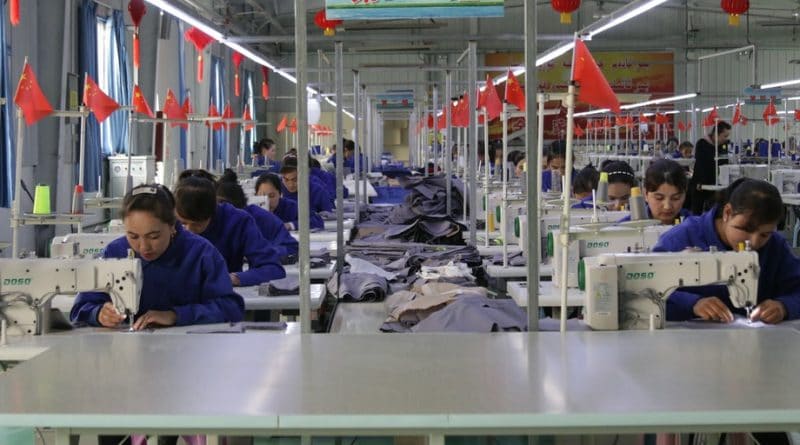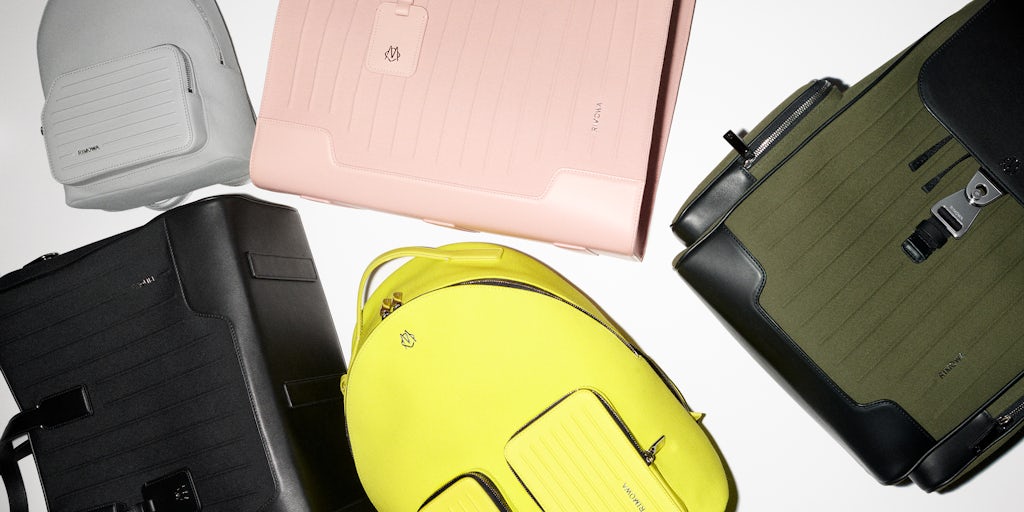Is Forced Uighur Labour in Your Supply Chain? | BoF Professional, China Decoded
SHANGHAI, China — A number of high profile fashion brands have found themselves implicated in the alleged use of forced labour in Chinese factories since 2018, but recent developments have made the allegations even more urgent.
If passed, two new laws working their way through the United States Congress and European Parliament would put the onus on brands to weed out forced Uighur labour from their supply chains. Uighurs are an ethnic minority of Muslims from western Chinese regions including Xinjiang.
The challenges that brands face, however, are twofold: some are simply unable to determine whether specific allegations about individual factories are true and others find the timely tracing of subcontractors in complex supply chains to be incredibly difficult.
“One of the biggest issues is visibility in the supply chain. When you talk about retailers that have hundreds and thousands of parts and tens of thousands of suppliers, for them to be able to seek out and find where those problems are at is very challenging,” said Jon Kirchoff, an associate professor of marketing & supply chain management at East Carolina University in the US.
It’s really difficult to trace cotton and raw materials because they do get mixed up in the process.
On the other hand, there is legitimate criticism that fashion brands have not sufficiently prioritised due diligence in their supply chains and that a lack of transparency continues to plague the global fashion industry due to collective inaction and irresponsibility.
Felicitas Weber, KnowTheChain project director at the Business and Human Rights Resource Centre — a publisher of benchmark reports on global supply chains for the apparel and footwear industries — said that brands complicit in this system in more ways than one.
“A lot of times supply chains are really very complex, but that is also a choice: How complex do you want to make your supply chains? We’ve seen some companies trying to reduce the complexity in their supply chains, working with key suppliers and having longer-term relationships [to increase transparency],” she said.
But even in cases where serious human rights violations are alleged, brands will find it difficult to be compliant with new American and European laws in a timely manner. Given the complexity of the issue and the growing support of the draft legislation, what do brands need to do now to start moving in the right direction?
What’s Happening in Xinjiang
First, executives need a better understanding of the issue and assign it a higher priority.
“I don’t think, for the most part, brands are intentionally not trying, it’s just that there are so many other things to worry about, perhaps it’s not on the top of their priority list,” explained Melanie DiSalvo, who founded sustainable supply chain consultancy Virtue + Vice after building a career sourcing for major retailers like Target and Walmart.
Nevertheless, as 2020 dawned, many apparel brands had already taken steps to distance themselves from sourcing and manufacturing in Xinjiang. More than one million people are believed by human rights groups, including the UN Committee on the Elimination of Racial Discrimination, to have been detained there in what the Chinese government has described as a “re-education” programme, with a “training” element that sees Uighur detainees work in manufacturing plants and agricultural enterprises.
According to the Chinese authorities, this “training” will help Uighurs obtain gainful employment and earn higher wages than they may be able to otherwise. However, many international governmental and human rights groups, including United Nations human rights officials, remain sceptical of this explanation, calling on Chinese authorities to close its Xinjiang camps and end its broader “crackdown” on the Uighur people.
But extricating a fashion company’s supply chain from this one problematic area on China’s northwest frontier has proven more difficult than it first seemed. While it is relatively easy to pivot away from apparel or footwear manufacturers in the region, it is much harder to avoid Xinjiang cotton, which is deeply entwined in the global fashion supply chain.
China is the world’s largest producer of cotton and, according to China’s National Bureau of Statistics, 74.4 percent of its cotton is produced in Xinjiang. There are widespread allegations that forced Uighur labour is being used to pick at least some of it.
Transferred workers are assigned minders and have limited freedom of movement.
Cotton from Xinjiang is then shipped to yarn spinners not only throughout China but offshore to other garment production hubs in Bangladesh, Cambodia and Vietnam. It is also combined, in many cases, with cotton from other regions to blur its origins, making it difficult for fashion companies to track to its source.
“It’s really difficult to trace cotton and raw materials because they do get mixed up in the process,” DiSalvo said, adding that it can be even harder for small, independent brands to be able to decipher the origins of their cotton.
“If your orders are so tiny you are buying ready-made fabrics, it’s impossible for you to say whether the process of that fabric was done in a perfect way.”
Bombshell Report Reveals Even More Complexity
Another layer of controversy and complication was heaped on the issue when the Australian Strategic Policy Institute (ASPI) released a study in February that implicated 83 global brands from various sectors (including fashion) that the institute claimed used forced Uighur labour as part of their Chinese supply chain — including in provinces outside Xinjiang.
According to the ASPI report, 27 factories in nine Chinese provinces had received a total of at least 80,000 workers between 2017 and 2019 as part of a government programme called “Xinjiang Aid” which has seen detainees sent to factories across China. The report then linked these factories to more than a dozen apparel and footwear brands, some of whom never responded to allegations. Others, however, like Gap, Nike, Adidas, H&M, Abercrombie & Fitch, The North Face, Puma, Tommy Hilfiger, Uniqlo and Zara did respond by providing statements to ASPI and directing BoF’s request for comment back to those statements.
“Forced labour” can take on many forms, but in this case, the ASPI report describes the practices for Uighur labourers in the Xinjiang Aid program in this way: “In factories far away from home, they are often sent directly from re-education camps and typically live in segregated dormitories, undergo organised Mandarin and ideological training outside working hours, are subject to constant surveillance and are forbidden from participating in religious observances. Numerous sources, including government documents, show that transferred workers are assigned minders and have limited freedom of movement.”
When consumers from around the world read such details, they quite rightly ask how this can happen in the supply chains of global fashion companies in this day and age.
Most of the companies named in the report — including H&M, The North Face, PVH (the parent company of Tommy Hilfiger), Adidas, Uniqlo, Zara owner Inditex — responded by reinforcing their commitment to keeping supply chains free from forced labour. But their responses also revealed just how difficult it can be for companies to know whether their operations are part of the problem.
“We can confirm that we do not source any garments from the [Xinjiang] region,” Gap Inc.’s statement reads in part. “We also recognise that a significant amount of the world’s cotton supply is grown and spun there. Therefore, we are taking steps to better understand how our global supply chain may be indirectly impacted.”
Puma’s response similarly cited Xinjiang cotton as a risk in the lower tiers of its supply chain: “Puma has no direct relationship with Huafu Top Dyed Melange Yarn Co. Ltd. However, as they are one of the world’s largest cotton yarn suppliers, some of our fabric suppliers buy yarns from them,” it said in part, going on to detail Puma’s efforts to map the origins of yarns they are using.
The response from Abercrombie & Fitch also demonstrates the lack of oversight that can exist when manufacturers within China make claims about supplying certain well-regarded fashion companies in order to attract new business (for example listing fashion brands on their website, which is how ASPI initially linked some of these factories to retailers in its research) when no such relationship ever existed.
Audits tend to be announced rather than unannounced so companies know that they are coming.
“A&F shared with APSI that as part of our regular review of our global supply chain, we decided to stop sourcing from the spinner … from 2020 onwards for any of our company’s brands,” its statement said in part.
“However, we were not asked prior to publication about the two other factories listed in the report as our suppliers. We followed up with ASPI after publication to confirm that we do not believe we source from either of the factories listed as supplying us,” the company added.
Other statements, including a publicly issued response from Nike, pointed out that they did use a certain supplier for a certain period, but disputed the characterisation of forced labour during the time period it was using that supplier.
“When reports of the situation in [Xinjiang] began to surface in 2019, [Nike supplier] Taekwang stopped hiring employees from [Xinjiang] to its Qingdao facility and it has confirmed that it no longer has employees from [Xinjiang]. Through the diligence process Taekwang shared documents that indicate all employees at the facility, including migrant workers from [Xinjiang], had the ability to end or extend their contracts at any time,” it read in part.
In other words, detection is incredibly complicated, not only because of the nature of the global fashion industry but also because in China organised labour organisations are discouraged, and in many cases legally prosecuted for protesting unfair labour practices.
Chinese authorities also have not encouraged transparency when it comes to the transfer of Uighur workers to other provinces. The practice, as with much of the broader crackdown in Xinjiang, has been performed largely under the radar, presumably to attract as little attention and international condemnation as possible.
According to KnowTheChain’s Weber, the industry standard practice of “audit-driven” supply chain due diligence is also problematic when it comes to weeding out forced labour and other nefarious activities.
“I think it’s a model that inherently doesn’t work,” she said. “The auditor is often paid by the company and they don’t necessarily want to find or want to point out any terrible issues. Also, audits tend to be announced rather than unannounced so companies know that they are coming.”
Consequently, if a company uses cotton from China and manufactures textiles or apparel in China, Bangladesh, Cambodia or Vietnam, and relies on audits as its best line of defence, then that supply chain is at risk of having utilised forced Uighur labour. This potentially puts a significant percentage of fashion companies, brands and retailers into the frame.
Tough New Legal Ramifications
In the United States, Congress has unveiled legislation that would effectively block imports of any goods from China’s Xinjiang region. If passed into law, the “Uygur [Uighur] Forced Labour Prevention Act” would reverse the onus of responsibility currently required.
Currently, the US Customs and Border Protection (CBP) agency can bar the import of goods — or blacklist the supplier of goods — if there is evidence forced labour was involved in their production. But the new bill, if enacted, would mean where Xinjiang products are concerned all such products are blocked unless the CBP has “convincing evidence” that no forced labour was involved.
Accepting the status quo is not an option.
On July 20, the US government also imposed sanctions on 11 Chinese companies it claims are complicit in human rights violations in Xinjiang. One of those companies, Changji Esquel Textile, is a subsidiary of Esquel Group, a Hong Kong based manufacturer with more than 40,000 employees that has a history of supplying fashion companies, including Hugo Boss, Ralph Lauren, Brooks Brothers and Lacoste.
John Cheh, chief executive of Esquel, has stringently and repeatedly denied using forced labour, including this week in an open letter addressed to US Secretary of Commerce, Wilbur Ross.
“Esquel does not use forced labour, and we never will use forced labour,” Cheh wrote, noting the company employed 420 Uighurs in its workforce of 1,343 in the region and flagging his company’s intention to lodge a formal appeal against its inclusion on the sanctions list.
The new law would put American retailers who import from China at risk too. A joint statement provided to BoF from the American Apparel and Footwear Association, in conjunction with the National Retail Federation, the Retail Industry Leaders Association and the United States Fashion Industry Association, acknowledges that “accepting the status quo is not an option,” but rejects the idea that focusing penalties on individual companies or industries will change the situation in Xinjiang.
“While we are taking action, our industry cannot solve this alone,” the statement reads in part. “A successful solution for all, including the workers, will require state-to-state engagement… we urge the US government to immediately engage a multi-stakeholder working group to develop and deploy a collective approach that accurately assesses the problem, and find constructive solutions that target bad actors and protect the rights of workers and the integrity of global supply chains.”
Meanwhile across the Atlantic, a law is winding its way through the European Parliament that French member of parliament Raphaël Glucksmann describes as “the most ambitious due diligence legislation in the world.”
Glucksmann expects the legislation will become law in 2021, and will see European companies held responsible for any violation — whether environmental, social or human rights — over their entire supply chain.
“This means, for instance, the boss of Zara would be responsible for violations in any country in the world,” Glucksmann said. While non-European companies wouldn’t be faced with the same legal implications in European courts, there would instead be trade implications once the legislation comes into force that would level the playing field.
He uses the example of Germany-based Adidas, which could legitimately argue that it is unfair that they would have to comply with this due diligence threshold while its American rival, Nike, would not. To address this, Glucksmann says there would be trade barriers to companies from anywhere else in the world that didn’t comply with the same due diligence standards required of European companies, but wanted to continue to do business in Europe.
What Should Fashion Brands Do Now?
Despite the inherent challenges presented by the fashion industry as a whole, individual companies are not powerless to do anything about alleged forced labour.
Both Melanie DiSalvo and Felicitas Weber recommend fashion brands use directly employed experts to conduct visits and due diligence audits wherever possible, rather than relying exclusively on third-party auditors or self-reporting from suppliers to alert them to any potential issues.
Primary surveillance is another increasingly popular option, says DiSalvo. More companies are setting up (or requesting access to existing) cameras on their manufacturing lines, so that they can keep track of what is happening 24/7 on the factory floor, without having to physically be there at all time.
However, whether factory footage would specifically reveal forced Uighur labour is not entirely clear. While it might track working hours on the line accurately, it is unlikely to show what happens outside of working hours (which is an important part of the allegations in this context).
Jon Kirchoff advises brands to keep a close eye on technological advancements that will improve transparency in the near future.
“Blockchain is a great, apparently disruptive technology that would allow companies to really dig into the issues in supply chains because, within a block of that blockchain, a lot of information can be contained about each order [and its provenance], this is something that has been talked about for a long time, but is yet to full materialise,” he said.
In the meantime, individual companies and associations representing the fashion industry need to make clear to their suppliers and counterparts in China that using forced labour will only make China less attractive and less competitive compared to other sourcing countries.
“[The Chinese government] will have to make the calculation: Is the crackdown on the Uighur people more important than the financial and economic benefits from their cooperation with these brands or not? Sure, the big brands need China, but it’s also true that China needs these brands,” said Glucksmann.
时尚与美容
FASHION & BEAUTY

Secoo is one of China’s leading luxury e-commerce sites | Source: Courtesy
Mixed Results for Online Luxury Sales in China
One of China’s largest online luxury e-tailers, Secoo recorded a drop in revenue in its first quarter earnings report ending March 31, with $141.96 million compared to $168.17 million for the same period a year ago. Gross Merchandise Volume (GMV) was up 12 percent to $34 million in the first quarter. Secoo’s earnings were released hot on the heels of a scandal in which the platform was accused of selling a fake Burberry handbag by a KOL on Douyin. Secoo is investigating the claims. Meanwhile, amidst gloomy results at luxury conglomerate Richemont (where overall sales fell 47 percent for the three months to the end of June, compared with the same quarter of 2019), revenue jumped 49 percent in China. For the jewellery segment, sales in China rose 68 percent, with Richemont saying a newly opened Tmall Luxury Pavilion store provided a particular boost to online sales for Cartier. (Secoo/Richemont Release)
Male Beauty Boom Present Opportunities for Niche Players
The men’s personal care market was predicted to hit $166 billion by 2022, according to Allied Market Research, while Marketing to China data showed that male beauty and skincare was one of China’s fastest-growing consumer product segments in 2019. It’s now commonly accepted wisdom that younger Chinese men are more open to experimentation, and are confident enough to try new products and cosmetics. Foreo has become one of the most popular beauty device brands in China, accounting for roughly 7 percent of the country’s market, largely on the back of its “Foreo Luna Men” beard cleaning tool. Meanwhile, skincare brand Pechoin has seen a recent re-birth, partially due to its men’s line. The C-beauty company has found substantial success with products exclusively for its male consumers, including moisturising face masks. (Jing Daily)
科技与创新
TECH & INNOVATION

WeChat Minishop | Source: Courtesy
WeChat Rolls Out ‘Minishop’ Tool in Challenge to Alibaba and JD.com
Tencent has launched tools to help merchants build virtual shops on its WeChat super app, pitting itself against the country’s major online shopping giants Alibaba and JD.com. Businesses and merchants will be allowed to sign up for a free test of the e-commerce product, known as WeChat Minishop. E-commerce “mini-programs” (apps within the WeChat messaging service) have existed for a while, but this new tool means vendors no longer need to rely on expensive developers. It won’t be a centralised system like JD.com or Alibaba’s Taobao, but it could help Tencent draw business away from these platforms. (WeChat LinkedIn)
China’s First International E-Commerce Court is Now in Session
Hangzhou has established a court for hearing cases involving international e-commerce disputes — the first of its kind in China. The Cross-Border Trade Court will be responsible for handling disputes over online deal inquiries, negotiations, and contracts, and has livestreamed its first case, in which a Singaporean national sued a Chinese e-commerce platform for misrepresenting a laptop he purchased. Hangzhou is China’s e-commerce hub, the home base for internet companies, including Alibaba, whose online marketplace Taobao has hundreds of thousands of vendors based in the city. (SixthTone)
消费与零售
CONSUMER & RETAIL

Intime Department Store in Ningbo | Source: Courtesy
Department Stores Boast Positive Outlook
Chinese department stores’ long-term outlook remains promising despite the impact of Covid-19, with increases recorded in corporate gross profit margin, net profit margin and customer unit price. Recent survey figures from Fung Business Intelligence show total sales of responding department stores last year reached $109.45 billion, up 2.8 percent year on year, with physical stores increasing in number by 1.3 percent. Many stores hit new sales records, listing double-digit growth in May. The report takes financial data from 103 Chinese department store operators from late November 2019 through to late May. (Inside Retail Asia)
JP Morgan: Chinese Consumers in ‘Reasonably Good Shape’
The purchasing power of the Chinese consumer remains relatively robust but uncertainty from the coronavirus pandemic still lingers, according to Tai Hui, Asia chief market strategist at JPMorgan Asset Management. China may have missed analysts’ expectations in June’s retail sales numbers, but Chinese consumers “are still in reasonably good shape,” Hui said. His comments came on the back of data released last week that showed weak consumption in China. Retail sales in June fell 1.8 percent on year, missing expectations for a 0.3 percent rise. (CNBC)
政治,经济与社会
POLITICS, ECONOMY, SOCIETY

Ant Financial logo | Source: Courtesy
Alibaba’s Ant Announces Dual Shanghai/Hong Kong Listing
Ant Group, the financial affiliate of e-commerce giant Alibaba Group has formally launched the process to make concurrent IPOs in Hong Kong and Shanghai in what could become the world’s biggest new listing this year. Ant, whose crown jewel is the Alipay electronic payment service, has been the subject of intense speculation about its plans for an IPO for years. But last year it completed a restructuring in which Alibaba became its 33 percent stakeholder in a long-delayed deal that also relieved it of a major related financial obligation. That cleared the way for the current listing plan. Media reports claimed the company aims to achieve a valuation of more than $200 billion, citing two sources familiar with the deal. (Caixin Global)
New Coronavirus Cluster in China’s Northwest Linked to Shopping Mall
A new cluster of Covid-19 cases has popped up in Urumqi, the capital of China’s northwestern Xinjiang region leading local authorities to implement “wartime measures” to stop its spread. Last Sunday, of the 22 new cases of coronavirus reported nationwide in China, 17 were in Urumqi, according to China’s National Health Commission. A total of 47 new cases have been recorded in Urumqi since July 15, when a 24-year-old woman who worked at a shopping mall in the city’s Tianshan district was diagnosed with the virus. The news will not be welcome for China’s brick and mortar retailers, who have been working assiduously to get people back out and shopping again in the months following the country’s initial widespread coronavirus outbreak led to lockdowns and restrictions on retailers in the early months of 2020. (The Wall Street Journal)



Ciao ,it is good . many thanks